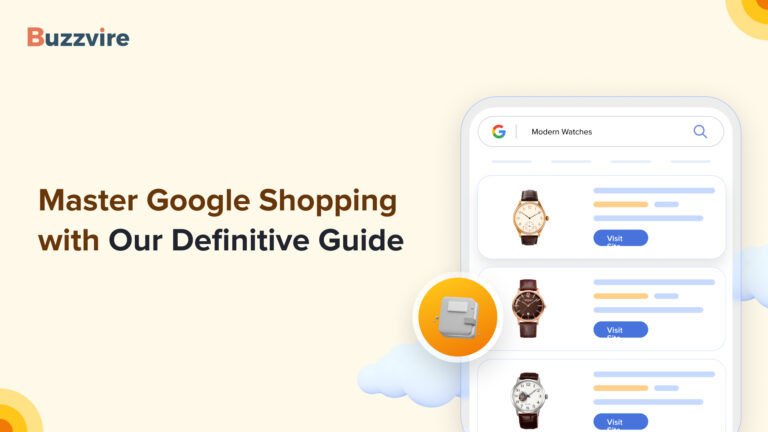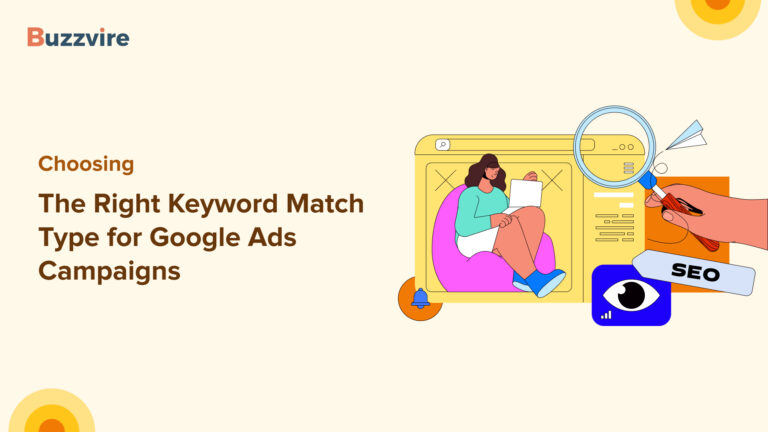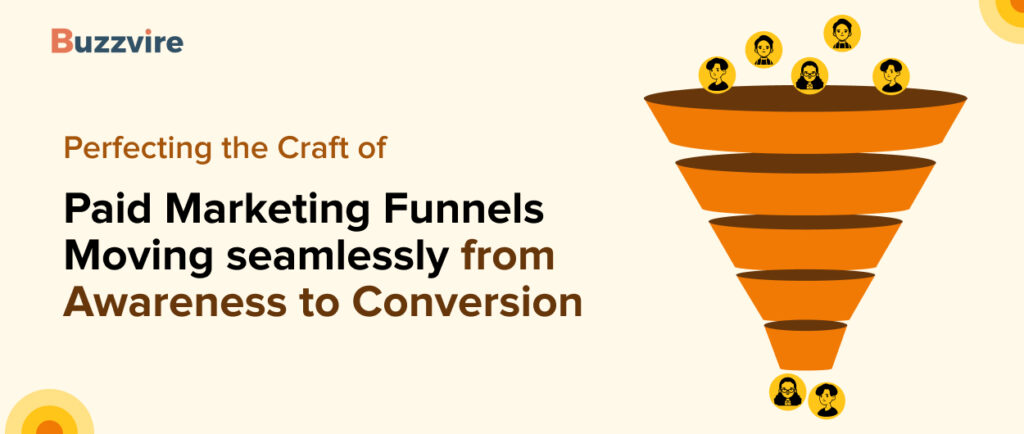
If you’ve done any research into marketing analytics, you’ve undoubtedly come across the word “funnels.” When and why should you use a marketing funnel?
As a visual aid, marketing funnels show you the steps potential buyers go through, from learning about your brand to finally making a purchase. By paying attention to these factors, you may learn much about why some consumers convert, and others don’t.
Knowing when and how customers engage with your brand is essential. It facilitates targeting, information provision, and furthering of the buying process.
You may improve conversion rates by adjusting your approach after identifying client attrition points.
Does it work? Let us investigate this matter further.
What Role Do Marketing Funnels Have In Attracting And Keeping Customers?
The purpose of a paid marketing funnel is to monitor the success of different marketing channels (content, ads, and landing pages) in attracting, retaining, and converting visitors into paying consumers.
Leads are produced through marketing funnels, but sales funnels create sales by recording the customer experience via micro-conversions such as list signup, form fill-out, and product purchase. This means they monitor your leads from the moment they hear about your product until they make a purchase decision.
The ‘AIDA’ model is the basis for marketing funnels:
- Attention: An interested party encounters your advertisement or social media post or learns about you via word of mouth.
- Interest: They believe you can help them and are eager to learn more about you.
- Desire: The potential customer is well-informed and keen to commit.
- Action: The potential customer makes a purchase, requests a demo, or performs any other desired action on your part.
However, you can create a three-stage model of the funnel:
1. Awareness Stage – Top of the Funnel (TOFU)
In the awareness phase, potential customers are initially exposed to your company and goods. Targeting new audiences with content and marketing that raises brand awareness is essential in the awareness stage since prospects at this point need to learn more about your brand or product. At this ‘top of the funnel’ (TOFU) stage, you should tell potential customers why they should choose you and how you can help them.
2. Consideration Stage – Middle of the Funnel (MOFU)
When potential customers reach the middle of the funnel (MOFU), they consider purchasing from your company. They may have begun following you on social media, subscribed to your email, or completed a form. Now that they’ve identified the issue, they’re considering potential remedies and researching several brands. At this point, you want to get your potential customers interested in you and what you offer by providing them with helpful information and gaining their confidence.
3. Conversion/Decision Stage – Bottom of the funnel (BOFU)
You have successfully engaged your target audience, earned their trust, and established a rapport with them by delivering relevant, helpful content. This ‘bottom of the funnel’ (BOFU) phase is designed to provide prospects with the concrete evidence and anecdotes they need to trust that you can help them with their issues.
Here are the concrete measures you can take to build a customer-focused marketing funnel:
What’s the Point of Having a Marketing Funnel?
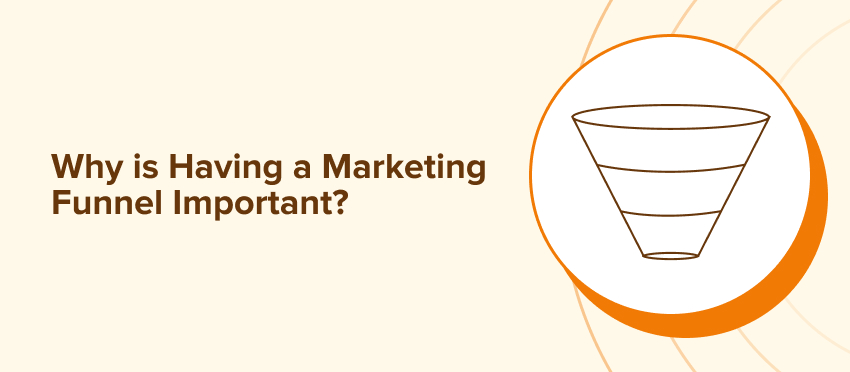
Sales funnels break out the steps a customer takes to become a customer. Then you can create a marketing strategy to reach customers wherever they are. Getting the most out of your marketing initiatives might help you organize them better.
Doing so may tailor your marketing efforts to the correct audiences and at the right moments.
Marketing funnels save time, money, and effort since they help you concentrate and target your efforts. As a result, implementing funnels is recommended to maximize marketing return on investment.
The fact that they are effective is a straightforward additional advantage of adopting marketing funnels. Marketers all around the globe can attest to the success of adopting marketing funnels to increase conversions. By guiding qualified prospects farther through the sales funnel, they may increase your business’s ability to gain and retain clients.
How to Build a Successful Paid Marketing Funnel?
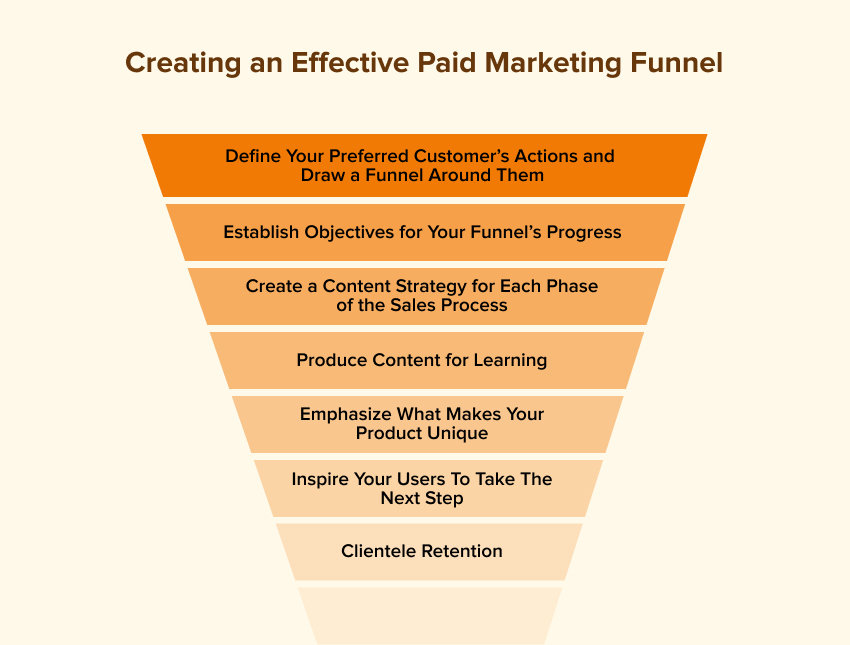
Paid marketing funnels can be made using a variety of models. Let’s start with the ideal buyer’s journey and discuss the various strategies you will employ in your marketing funnel.
1. Define Your Preferred Customer’s Actions and Draw a Funnel Around Them
A conversion funnel is a sales strategy that helps you create a smooth purchasing process and boost conversions. However, you can’t go somewhere without knowing where you are and where you want to go. That is to say, you need to ascertain the following three factors:
- How the current purchasing process often works.
- How you want a potential customer to take action, or what your final aim is.
- How you can enhance your buyer’s journey to boost the conversion rate from prospects to paying clients
You can draw out a marketing funnel when you know where to end up. Creating a visual or physical representation of your funnel early on helps keep you on target as you progress.
2. Establish Objectives for Your Funnel’s Progress
Your marketing funnels may be divided into three sections: the top, the middle, and the bottom. WordStream created this diagram to help you see how your aims shift as you progress.
Think about your goals at each level of the funnel. Increasing traffic at the top of the funnel, increasing engagement in the middle, and increasing conversions at the bottom are good examples.
If you want to achieve your goals, use the right tools to monitor your development. For instance, you might track success rates with email automation or web analytics platforms like Google Analytics.
3. Create a Content Strategy for Each Phase of the Sales Process
A separate marketing strategy for the funnel’s top, middle, and bottom is needed to keep prospects engaged at each level.
Let’s dissect this problem.
- Top: Create a demand for your services and products. Create films, write short blog entries, and share them on social media to introduce your business and highlight your brand narrative.
- Middle: Win your consumers by proving that you can satisfy their wants. Because a prospect may be in this phase for some time, providing them with helpful resources like case studies, video courses, and downloadable materials is essential.
- Bottom: Incentivize potential customers to purchase, join, or perform any desired action. Free trials, actionable emails, call to action, and other CTAs are all viable options at this point of the marketing process.
4. Produce Content for Learning
Educational material that teaches customers about your product, offers them relevant information and practical advice, and encourages them to keep connecting with your brand at every marketing funnel stage, is an integral part of optimizing your marketing funnel.
As your audience progresses through the stages, providing them with instructional information will help them better understand their pain areas and appreciate your brand’s capacity to alleviate them.
Try the following educational resources for the awareness stage:
- Blog entries that answer the “what,” “why,” and “how” questions.
- YouTube tutorials, explanations of everyday objects, etc.
- DIYs, live streaming explaining your product or service, Instagram stories featuring users’ first impressions, and promotional posts all count as social media content.
Pay attention to the following throughout the consideration stage:
- Marketing emails.
- Newsletters.
- Weekly broadcasts online.
- Informational white papers, ebooks, and webinars that need a password to access.
- Podcasts.
During the decision stage, use these content examples:
- Showing off the products.
- Examples of how your product has helped satisfied customers.
- Testimonials and other forms of social evidence.
- Websites that specifically promote an offering.
- FAQs.
5. Emphasize What Makes Your Product Unique
Now that you’ve informed your target market, you must show them why they need your product or service. Emphasize your USP or what sets your product or brand apart.
How to Draw Attention to Your Unique Selling Point
- Use your website or a newsletter series to publish in-depth case studies of your product’s most successful consumers. This might be especially helpful for young companies still building their reputation and customer base.
- Display your superior pricing model in a prominent place on your website.
- Build landing pages for your product that are easy to understand and aesthetically attractive, and provide high-quality demonstrations of the product.
- Check session records to understand how people explore your website, and then optimize your important product, price, and conversion pages to avoid broken links, malfunctions, or problems.
- Users who have visited your website but have not purchased anything might be shown targeted advertisements.
- Create blog entries comparing your product to that of your rivals or offering alternatives to them.
- Encourage more product reviews and use them in your marketing.
6. Inspire Your Users To Take The Next Step
To convert a lead into a customer at the end of the marketing funnel, you must encourage appropriate action. Your company’s best course of action may vary from one to the next. Actions that you may want your prospects to do are listed below.
Make a Printable PDF:
Make a PDF download of helpful information available in return for a lead’s email address. If you want people to download your paper, you should guarantee it will answer frequent client queries.
Include a Call to Action (CTA) with Useful Materials:

Include a call-to-action in your text to clarify what readers should do next. In this last stage of the marketing funnel, you want to convince clients to buy. So, make the calls-to-action seem urgent. Focus on how your product can help them and why they need to purchase right now.
Useful Email Communication:
Helping individuals assist themselves is at the heart of effective marketing. Please ensure your emails are easy to read and include actionable information to encourage them to purchase your items or use your services. You must balance the importance of having a clear CTA; this will help direct prospective consumers to perform the desired action.
Use Feedback from Existing Clients:
Did you know that 72% of potential buyers would only purchase once they have read some testimonials? Add testimonials to your site to give potential buyers the confidence they need to purchase. You may solicit customers’ opinions directly, or you can peruse existing evaluations on platforms like Facebook and LinkedIn and get permission to include them in your material.
7. Clientele Retention
Excellent marketing goes beyond just acquiring clients. Keeping them on board is also essential. It might be up to five times more expensive to bring in new clients than retain the ones you already have.
Did you know that, besides saving money, your current clients are around 50% more willing to give your new items a shot? Now that you know this, you can try out new strategies at the top of your retention funnel to see which ones work best. Reminding your loyal client base of the benefits of your product or informing them of recent innovations are just two examples.
Building a Successful Paid Marketing Funnel Is Important For Several Reasons:
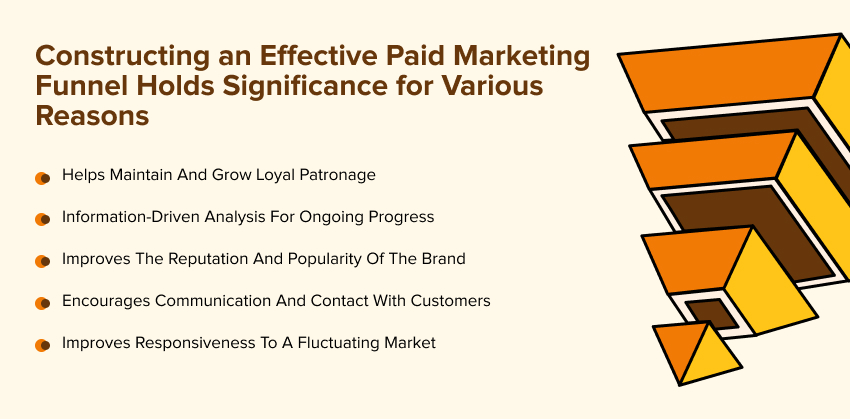
- Allows Prospects To See Where To Go Next:
A marketing funnel is a systematic process that leads to more conversions from those who were formerly only aware of your brand. Leads won’t get confused or give up at any stage of the process if a clear and purposeful route is laid out for them. This increases the potential for leads to become actual, paying clients.
- Maximizes The Effectiveness Of Advertising Dollars:
Using a paid marketing funnel, you may narrow down on certain demographic, interest, and behavioral subsets of your target audience. This pinpoint accuracy guarantees that your advertising dollars will go to the people most receptive to them. Your marketing campaign’s ROI will improve, and you will reduce your ad spending if your message reaches the correct individuals.
- Helps Maintain And Grow Loyal Patronage:
Customers’ retention and loyalty should be the central goals of any effective paid marketing funnel, not merely a means to an end. Strong customer relationships are built on relevant content and tailored communication to guide prospects through the sales funnel. Customers happy with your products and services are more likely to buy from you again, promote your brand, and recommend you to others.
- Information-Driven Analysis For Ongoing Progress:
Data and insights about your customer’s behavior, preferences, and interactions with your adverts and content are generated through paid marketing funnels. Data analysis may reveal the funnel’s strengths, flaws, and potential upgrade areas. With this data-driven strategy, you can improve your marketing, your targeting, and your customers’ experience as a whole.
- Improves The Reputation And Popularity Of The Brand:
Paid marketing funnels help spread the word about your business to those likely to be interested in it. Exposing prospective clients regularly to your brand and helpful material demonstrates your expertise and legitimacy. Trust in the brand might get a boost, which is vital for closing sales.
- Encourages Communication And Contact With Customers:
You may promote client engagement and action with your brand by using the different phases of the marketing funnel. Fostering active involvement may generate a great customer experience and promote conversions, whether via social media engagement, email conversations, or targeted offers.
- Improves Responsiveness To A Fluctuating Market:
Adaptability and scalability are built into a well-organized paid marketing funnel. It helps you adapt quickly to changes in demand, client tastes and market tendencies. You may adapt your marketing strategy in real-time as you collect data and get input from your target audience.
Final Thoughts
Many marketers’ marketing funnels aim to have leads that turn into paying customers. However, the problem with that kind of thinking is obvious to seasoned marketers.
Customer retention is more crucial than bringing in new customers, as any seasoned professional would attest. The lifetime value of a consumer increases if they become a repeat customer. Thus, including a post-purchase stage in your sales funnel makes sense.
In order to incorporate one or more post-purchase phases, many marketers are now rethinking marketing funnels. Just as they did, you should have a plan to keep your customers even after they’ve moved on from your marketing funnel.
FAQs:
An integral part of any successful marketing strategy is the marketing funnel. It lays out the most basic steps a buyer may take to purchase. The marketing funnel helps maintain contact with consumers at every stage of the sales process.
Awareness, consideration, and conversion are top of the KPIs. However, additional stages consist of retention and loyalty of the marketing funnel.
You can move some of them into the customer segment of the funnel by offering them exclusive content that delivers exciting and relevant information (such as electronic newsletters, surveys, limited offers, white papers, and other special reports) and allowing them to subscribe for more.
At the awareness stage, showcase your brand and the value offered through engaging imagery and clear, short copy. Learn more about the advantages at the interest stage. Provide product comparisons and testimonials throughout the consideration stage. Conversion-stage marketing should use compelling calls to action and time-sensitive discounts to increase engagement and conversions. Maintain a cycle of testing and tweaking.
In order to measure the effectiveness of your funnel at each stage, you need to keep track of KPIs such as click-through rates, conversion rates, cost per acquisition, and engagement metrics. Regular data analysis will reveal your funnel’s strengths, flaws, and opportunities for development, allowing you to fine-tune it for maximum efficiency.
If you want your next paid marketing funnel to be a success, make sure you know your audience inside and out, have a solid plan for capturing and nurturing leads, provide compelling freebies, keep in regular contact with leads, and limit the funnel’s number of steps as much as possible.





